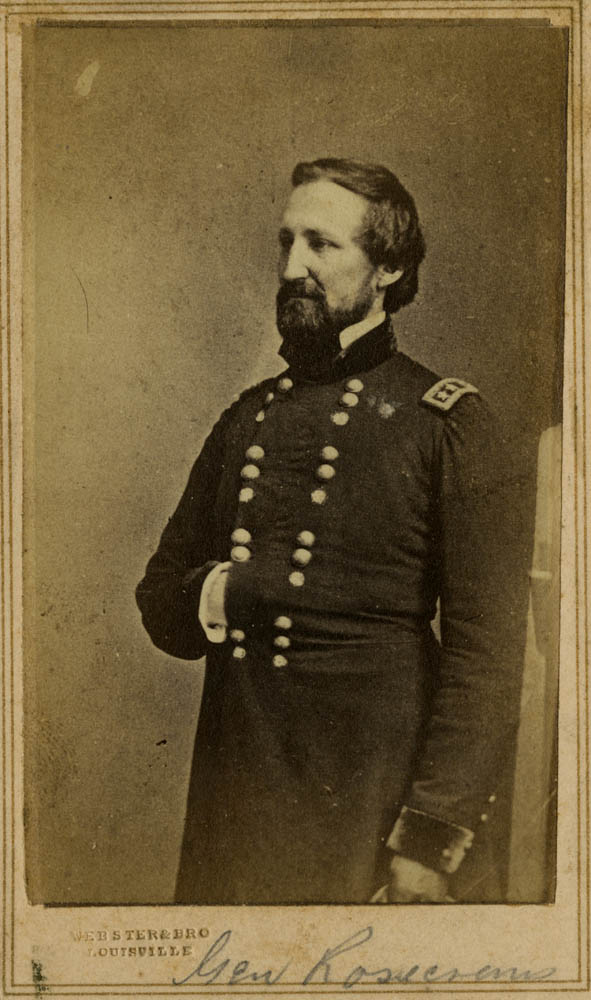Born on September 6, 1819 in Delaware County, Ohio, William Rosecrans graduated from West Point in 1842 and was commissioned in the Corps of Engineers. After supervising several construction projects and serving as an instructor at West Point, he resigned from the army in 1854 and became a businessman in Cincinnati.
When the Civil War began, Rosecrans became both colonel of the 23rd Ohio Infantry and a Regular Army brigadier general. After commanding a brigade at the Battle of Rich Mountain, West Virginia, in July 1861, Rosecrans led Union forces in the Department of Western Virginia.
The following spring, he led the Army of the Mississippi at the battles of Iuka and Corinth, Mississippi.
In September 1862, Rosecrans was promoted to major general of volunteers. He assumed command of the Army of the Cumberland, and advanced southeast from Nashville toward Confederate General Braxton Bragg’s Army of Tennessee in late December 1862. Bragg launched a furious assault on the Army of the Cumberland along Stones River, and after two days of savage fighting, the Confederates withdrew.
Rosecrans paused in Nashville for the first half of 1863, then advanced toward Bragg again. He skillfully maneuvered the Confederate general out of middle Tennessee and secured Chattanooga in early September. Rosecrans then moved his army into northwest Georgia. Bragg struck Rosecrans again, this time along Chickamauga Creek, but after two days of intense combat, the Union army withdrew back into Chattanooga. Bragg’s army laid siege to the city.
In mid-October, Rosecrans was relieved of command in Chattanooga by Major General Ulysses S. Grant, and was reassigned to the Department of the Missouri. In the fall of 1864, he mobilized Union forces to oppose General Sterling Price during his raid through the state.
Rosecrans resigned from the Regular Army in 1867, then served as minister of Mexico, a member of Congress, and register of the Treasury. He died at his ranch in California on March 11, 1898, and was later interred at Arlington National Cemetery.
Carte-de-Visite by Webster & Bro., Louisville, Ky.
Image Courtesy Wilson’s Creek National Battlefield; WICR 32017




